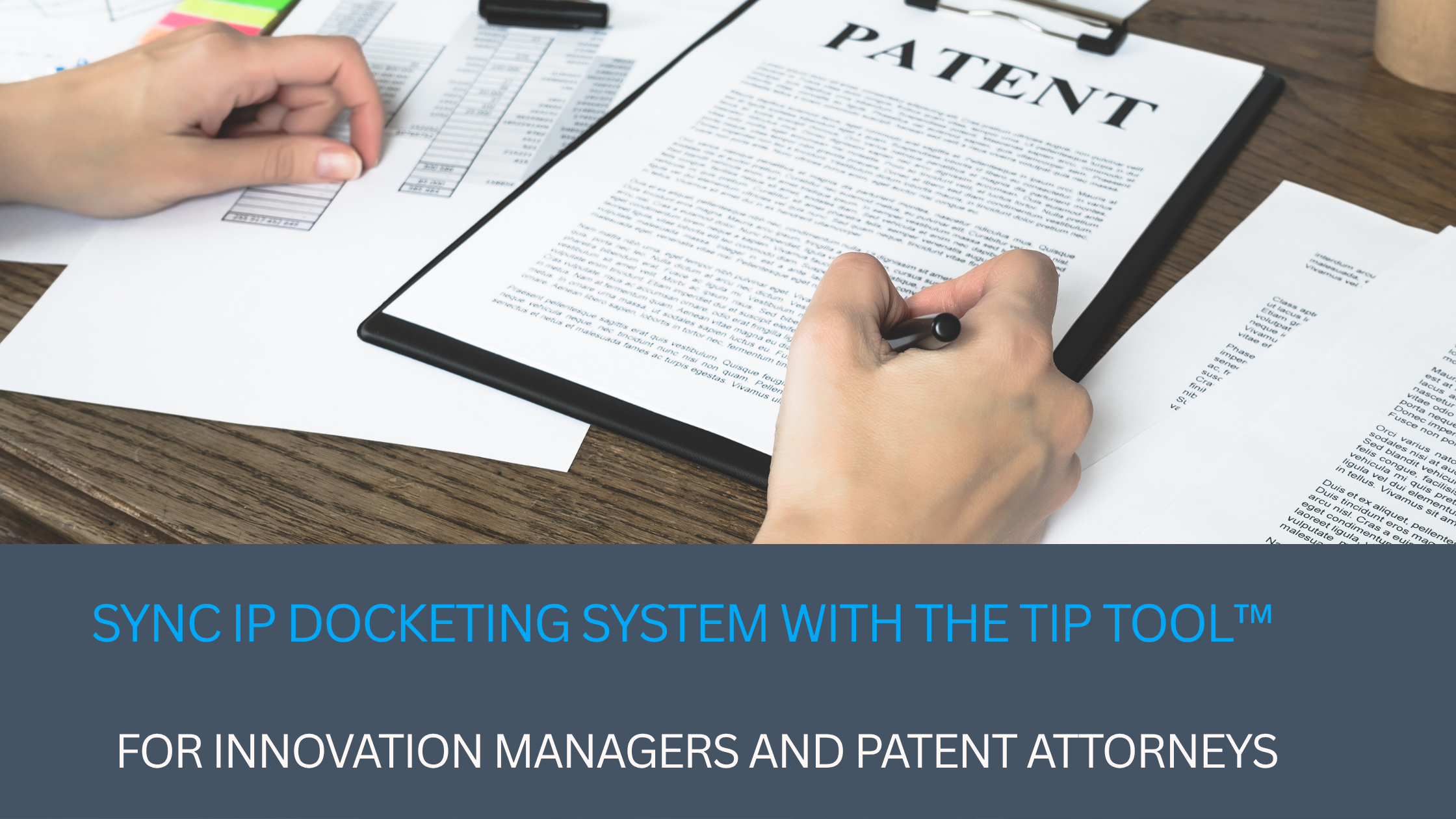IP strategies could be defined as establishing a plan of action to maximize the returns on IP investments. In this vein, SMEs should focus on assessing the patentability of their ideas to ensure they’re investing in viable IP.
Let’s explore how SMEs can implement the IP strategies used by large companies to make the most of their IP budgets!
Large companies and small and medium-sized enterprises (SMEs) undeniably operate with different available resources and business goals. Aside from basic differences in numbers of employees, SMEs typically focus on niche markets while large companies tend to offer a wider variety of products and services. Large companies can raise money by selling shares of stock while SMEs often seek financing from outside investors such as venture capital firms or pursue opportunities to be acquired by larger entities.
One area where differences between SMEs and large companies is particularly salient is how these entities approach their patent/IP portfolios. Some of those differences are driven by budgetary constraints, some are driven by the availability of manpower, and some are driven by business goals. In some cases, however, SMEs simply have not had as much experience with patents as larger entities. SMEs are unaware of how to change their approach to patenting in ways that provide strategic business advantages.
What are some IP strategies that large companies employ that SMEs do not, and how can those strategies be adopted or adapted by SMEs?

IP Strategy #1 – Large Companies Employ Best Possible Legal Expertise
Not all patents are the same. In fact, many are not worth the paper they are printed on. That is because patents often issue with claims that are too narrow or with terms that are interpreted to mean something different than what was intended.
The more elements that are included in a claim, the easier it is to distinguish the claim from what has come before and therefore establish patentability. That is why it is often relatively easy to obtain an issued patent with very narrow claims. The problem with such claims is that they are easy for competitors to get around. For example, a claim to an incandescent lightbulb with a carbon filament would not cover a competitor’s incandescent lightbulb with a tungsten filament. If the claim had been drafted instead to recite an incandescent lightbulb with a filament, this broader claim would better protect against commercially viable variations of the patented product.
Sometimes a seemingly simple word choice is enough to render a patent completely worthless. In an infamous patent case involving baking dough, a patent was rendered useless because of the phrase “heat the dough to 450 degrees.” The phrase was literally interpreted to mean that the internal temperature of the dough had to reach 450 degrees, when what was intended was “heat the oven to 450 degrees.”
In addition to general issues of claim interpretation, particular technology areas require specialized claim language and structure, and there are also many legal requirements that must be met for a patent to hold up in court. All of this adds up to the fact that patent law is a highly specialized area of law that requires a lot of training and skill. Large companies understand this and typically use established expert patent law firms or build their own in-house patent departments and budget for that expertise. In contrast, SMEs, due to their limited budgets, often try to cut corners by drafting patent applications themselves or seeking affordable (not necessarily expert) service provider, only to discover years down the road that a core part of their business is not adequately protected.
IP Strategy #2 – Large Companies Look for Broader IP Protection for Key Products
Large companies with significant financial resources often pursue a strategy of procuring and maintaining a large quantity of patents. As an example, Samsung Electronics had 76,638 active US patent application families across all its subsidiaries in 2019
Large patent portfolios allow more varied levels of coverage for key products while also allowing large companies to pursue protection for products or aspects of their business of lesser importance but that still have value. Large companies use multiple patents to protect a broad class of products and services around an invention, with follow-on filings used to cover new developments as they arise. For instance, different patents may have broad vs. narrow claims, or claims directed to different aspects of a product or service such as component parts, software elements, electrical systems, methods of use, and manufacturing aspects. The cumulative effect of such an approach is to minimize the importance of any one patent to a company’s business goals.
Another aspect of large patent portfolios that large companies leverage to their advantage is their ability to deter potential infringers and competitors from trying to compete in the marketplace. It is time intensive and expensive to analyze a patent and determine whether it is invalid or whether a proposed competing product would infringe. The more patents a company holds in a given area, the more resources others need to spend to determine if they have freedom to operate in that area.
In contrast, SMEs have budget constraints that typically drive them to focus on a small number of core patents. For many SMEs, every patent matters, and a single patent can make or break the company. SMEs are often under a threat to be gobbled up by large companies in the absence of a strong defensive patent portfolio.
IP Strategy #3 – Large Companies Do More Strategic Patent Planning Than SMEs
Decision makers at large companies know that not every product needs to be protected in every potential market. For example, if the market for a product is only in the US and Europe, it doesn’t make sense to apply a one-size-fits-all IP strategy that includes patent filings in Canada, Japan, and Australia. However, if it is anticipated that a market for the product will emerge down the road in one of those countries, then a patent filing is justified.
Large companies tend to employ more strategic planning when it comes to mapping their IP strategies onto what is known or anticipated about markets for a product, where manufacturing plants are planned, and the location of potential partners/licensees or competitors. They typically develop a clear plan early on for which countries are most important for patent coverage for a given product, and also reassess those decisions over time. If market forces change over time, large companies identify these trends and adjust their IP strategy accordingly by abandoning applications or deciding not to pay patent maintenance fees in different countries.
SMEs may either seek too few countries for protection in an effort to save costs, or pursue applications in as many countries as possible in an effort to make their portfolio more attractive to potential investors or acquirers – neither of which aligns their patent approach with the true market for their product.
IP Strategy #4 – Large Companies Seek to Invalidate Competitors’ Patents More Than SMEs
SMEs can learn about managing patent costs effectively while still maintaining a robust IP portfolio.
Just because a patent is issued does not mean that it is valid and enforceable. Invalidity actions can be pursued either through litigation in court or via pre- or post-grant proceedings before the issuing patent office. For example, the US provides several avenues to challenge the validity of a patent after it has been granted, and almost 11,000 petitions to initiate such proceedings were filed in the USPTO between 2012 and 2019. Whether invalidity actions are decided by a US district court or in a proceeding before the USPTO, around 40-45% of all challenged US patents are determined to be invalid in whole or in part.
Large companies typically monitor and analyze their competitors’ patent portfolios on an ongoing basis. Such monitoring allows the opportunity to initiate offensive actions to invalidate patents of strategic business interest, but also provides additional benefits. Competitive patent monitoring can provide insight into competitors’ future product offerings and marketing strategies, allowing companies to modify their own market or product strategies in response. Tracking patent filings can also highlight untapped markets where a low number of patent applications have been filed and where a company can potentially gain a patent foothold or technological advantage.
SMEs often lack the resources or the sophistication to monitor and analyze their competitors’ patent portfolios on an ongoing basis. And hence it not in their capacity to initiate offensive actions to invalidate patents.
What Can SMEs Do Differently?
You Get what you Pay for
The US Supreme Court has long recognized that a patent application constitutes one of the most difficult legal instruments to draw with accuracy. SMEs can take big leaps based on the strength of its core patents, they should consider not to cut costs especially from the drafting budgets.
SMEs should avoid basing their hiring of a patent attorney or agent solely on who provides the cheapest services. Of course, budget is a factor. But sacrificing top notch skill and experience for the lowest bidder may not be a great move.
Drafting Patent Applications
SMEs should also avoid trying to have the application written in whole or in part by a non-patent professional. SMEs often think that they can cut costs by having one of their scientists or engineers prepare the application, and that a patent attorney or agent can just edit it or add claims to it. This is dangerous – a patent application is not an academic manuscript or a summary of technical specifications. While a write-up from the inventors is very useful to a patent attorney or agent, as described above there are ways of drafting patent claims that can either provide broad scope or severely limit protection. In addition, there are legal requirements that must be met for the application as a whole – for example, claims are routinely invalidated on the basis that a particular element was not described adequately or at all in the supporting text (specification) of the patent.
Provisional Patent Applications
Another danger area is improper use of provisional patent applications. Provisional patent applications have relaxed requirements regarding formatting, supporting documents, and claims compared to full patent applications, but allow applicants to establish a filing date so long as the full application is filed no more than a year later. Because they can be produced faster and cheaper than full applications, SMEs often file bare-bones provisional patent applications with the intention of fleshing out their description of the invention in the full application. This is dangerous because provisional patent applications are still held to the same standard as full patent applications when it comes to legal requirements for describing the invention completely and in a way that explains how to make and use the invention. Patent cases abound where claims are held to be not entitled to the filing date of their provisional patent applications because of inadequate disclosure, with consequences that often result in findings of invalidity.
A Hybrid Approach for Quantity with Quality
SMEs obviously have budgetary constraints on the number of patent applications they can file and maintain. There are, however, some cost-conscious approaches they can pursue to expand their patent portfolios without sacrificing quality.
Even with large companies, not every patent application is treated the same. Some are extremely high value and receive extra time and attention, while others are of lesser value and receive merely the resources needed to competently provide reasonable coverage. SMEs can follow suit on their own scales by prioritizing patent applications into first and second tier filings based on their strategic value. A second tier of applications can be pursued while controlling costs by narrowing the scope of the drafting (and limiting the number of countries in which applications are filed – more on that below.)
Where available, SMEs should also explore their options when it comes to continuation applications. A continuation application enables an applicant to pursue additional claims based on an earlier-filed patent application, so long as that earlier application has not been issued or abandoned yet. The continuation application is afforded the same priority date as the earlier application. Because it is often easier to get narrow claims allowed compared to broader claims, SMEs should consider narrowing claims initially or in response to an examiner’s rejection. This will allow them to quickly obtain a first patent with narrow claims (e.g., a specific version of a product) while filing one or more continuation applications to obtain additional related patents with claims of varying scope (e.g., to a range of different versions of the product).
Work Smarter, not Harder
In order to avoid pursuing patent applications in either too few or too many countries, SMEs should, ideally, clearly identify their markets when the patent application is initially being drafted and develop a country-by-country filing strategy accordingly. Of course, that is not always possible. When decisions on where to file need to be delayed, SMEs should take full advantage of the time allowed to them when filing an international patent application under the Patent Cooperation Treaty (PCT). SMEs can file a provisional patent application followed a year later by a PCT application, and then they do not have to decide upon (or pay for) related patent filings in individual countries until 30 months from the filing date of the provisional application.
The provisional to PCT strategy described above assumes that SMEs only want to file in one of the 153 countries covered by the PCT. If a market falls outside of those countries, then related patent applications need to be filed directly in those non-PCT countries within a year of the provisional application filing date. This also highlights the importance of making these decisions as early as possible.
Global Patent Portfolio Strategy
When determining what countries to file in, SMEs should consider the following questions with respect to current markets and anticipated markets in the future:
- Where do I expect to sell/manufacture/distribute the product?
- Where is patent protection available (e.g. software is not patentable in Europe, Russia, Argentina, or Brazil)?
- Which countries are competitors filing patent applications in?
- Where do competitors want to sell/manufacture/distribute their product?
- Where are your potential investors or acquirers doing business?
In addition, SMEs should review their patent portfolios every one to two years and/or any time there is a substantial change in business focus to make sure that patent filings still align with business goals. This review should focus not only on the relevance of geographic locations, but also to make sure that applications and claims are still relevant to the business. If either a location or the scope of an application or patent are no longer relevant, sell/license it or abandon it.
Targeted Monitoring
Even if SMEs don’t have the resources to initiate invalidation actions against competitors, there is value in knowing what patents are issuing around your core product or technology. Many companies offer patent monitoring services through which an SME can be alerted whenever a new patent issues or patent application publishes meeting search criteria of interest.
Some of the key benefits of patent monitoring searches include:
- Gaining insight into competitors’ product market strategies and the technology areas they are investing in.
- Identify new market opportunities where patent applications directed to certain inventions have not been filed.
- Reassess business goals if a market is “too crowded” (i.e., too many patent applications filed on similar inventions.)
- Where a competitor’s patent or patent application has claims that cover an SMEs product, the SME can develop a strategy to either defend against a patent infringement action or proactively initiate an invalidity challenge.
- Identify potential infringers of the SME’s patents, allowing for attempts to either pursue a license or initiate a patent infringement action.
On a side note: Would you want to know how your patent application is progressing at the USPTO compared to other applications in the same domain?
The TIP tool offers statistics of the law firm and the examiner handling your case. Once the application is filed at the USPTO, and an examiner is allotted to your case, the tool indicates the relative performance of the law firm handling your case. The statistics revolve around the number of arguments, grant rate, and grant time. The tool also indicates the case health, for instance, it can tell you if a case needs your attention. There is a whole bunch of insights that you can gather from the TIP tool for strategic patent prosecution.
Request insights for any of your cases at the patent office using the form below.
Conclusion
Let’s summarize how SMEs can implement the IP strategies outlined above. Large companies have in-house patent counsel responsible for the company’s patent portfolio, either performing the patent preparation and prosecution themselves or directing every move made by outside counsel. Such in-house counsel can oversee and carry out the types of strategic approaches described above. SMEs typically solely rely on their outside patent counsel to alert them regarding such issues. Alternatively, SMEs should consider assigning someone in-house as a point person for patent management who is responsible for working with management and outside counsel to coordinate and implement various IP strategies.



